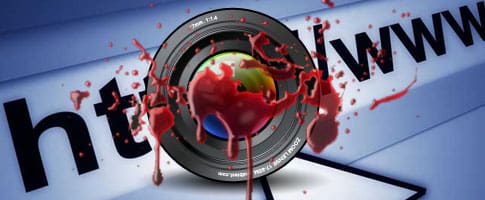How Bad Photography Can Kill A Website
How remiss of me to have not written an article about this topic before, but now is as good a time as any especially as Trinidad & Tobago is lukewarming up to this website thing (yes I said that on purpose), AND… because I’ve covered most of the other bases pretty comprehensively.
What brought this subject to the fore were actual recent experiences I’ve had while building certain websites so I thought it necessary to put my two index fingers to keyboard and type.
It’s also a refreshing change-up as far as topics go for I’ve absolutely not written anything on it at all and it’s just as important as online marketing and SEO. So let’s get to it.
Of what photography do I speak
I’m referring to any and all photography used on your website whether taken by you or not, but more specifically those taken by you. And what might these be? Photographs of:
- Products- the full product suite of your business in thier final packaging
- Projects- work in progress and finished jobs
- Events- store openings, award ceremonies, conferences etc.
- Personnel- staff at all levels from top to bottom
- Internal Operations- factory floor, warehouses, offices, staff at work (or pretending to!)
- External Operations- deliveries, installations, vehicles
- Medical Operations- SNORT! That’s a joke!
Bad photography means what?
In this day an age of digital cameras that slices and dices, mows your lawn and grates your cheese, not to mention take pictures in a million megapixels you would think there should be no such thing as bad photography. But an image may be of super quality in vivid color and still be bad because of poor composure and, just the same, it may be perfectly composed but of low picture quality. Bad photography includes:
- Photos of poor technical quality- poor lighting, blurry
- Photos poorly composed- shot too far or too near, contains distracting elements not pertaining to the subject, looks busy or scant
- Photos looking obviously amateur (you know it when you see it)
- Not having your own photos (stealing photos online or using stock photography)
How bad photography kills a website
Perhaps that’s a little ‘exaggertory’ (my word) to say kill. It won’t kill your site dead, but kill it softly if you know what I mean. I’ll also hasten to add that it doesn’t harm your website per se, i.e. that you won’t lose business by a visitor gasping ‘ugh ugly picture’ and heading for the Northern Range. In fact I’ll qualify that statement by saying that the typical Trini visitor will not make that big a deal of it because it’s normal for small/medium business websites to do things in-house and not hire a professional photographer.
What I mean is that it doesn’t help your business especially compared head to head with a competitor who goes the extra mile to use quality images on his website. Without it you’ll have a nice ‘average’ website but do you want to be average or exceptional?
Bad use of photos also kills websites
Boy do I see this all the time. The biggest offence commonly seen is the use of improperly re-sized images, among others:
- Re-sizing images disproportionately to fit a space. Usually it’s a reduction and the image looks squashed and ugly
- Re-sizing images proportionately but the original size is small causing it to look blurry and grainy
- Using the wrong image to illustrate content
How you can take nice photos on your own
Professional photographers are professional for a reason. I’m not a professional. However, many moons ago, back in the days of yore, I got bit by the ‘shutter-bug’ myself, paid a hefty sum for a Minolta 3xi SLR camera and spent a lot of time shooting people and things (er… using the camera), and even went as far to enroll in a correspondence course with the New York Institute of Photography. So I did learn a thing or two, so I’ll tell you both.
1. Get the ‘eye of the photographer’
We all know what good photography looks like even when taken by an amateur. Take the time to analyze quality images to see what gave them such quality. It may be the lighting, camera angle, use of props etc. Good shots also take planning, i.e. knowing what the shot would be to illustrate the point on your website, for example, the image may be for a paragraph about your well stocked warehouse.
2. Take a lot of photos
You don’t have to buy film anymore so it’s not expensive anymore. Take many shots from different angles, settings and composure to increase the probability of obtaining a worthy image.
3. Show a sequence when necessary
Okay, I lied, I learnt more than two things. I’m referring mainly to projects now. Instead of random images, try taking your shots over the life of the project. If it’s a construction job, show the bulldozer working, laying the foundation, pouring the cement, building the structure, plastering, painting, finishing etc. Also, don’t be afraid to show the human side too- laborers smiling (I know, good luck with that!), the engineer examining the blueprints etc. These will do a lot for your project portfolio.
4. Get the equipment if you can, cheaply
I would recommend you invest in a good tripod at least. You can improvise with lighting by using floor lamps from your home (especially those with goosenecks) and you can also make your own lightbox for product photographs (to learn how, Google is your friend here). These product photos on my client Pepe’s Marketing’s website were taken by me :
[one_half]

Shot using lightbox
[/one_half] [one_half_last]
[/one_half_last]
[one_third]
[/one_third] [two_third_last]

Same image used in Slide
Conclusion
Like the saying goes, “it’s the little things that get you. Chances are you’ve never been bitten by an elephant, but you sure have been bitten by a mosquito”. What I’ve not seen in many websites is the attention to simple details that, when combined with other small details, provide a synergy to give the site a personality— the company’s personality and that’s something that your visitor can connect with. I’m a big advocate of using your own company photos and encourage you to start thinking in this direction. Lastly, cameras don’t take bad pictures— people do!



Comments
No comment yet.